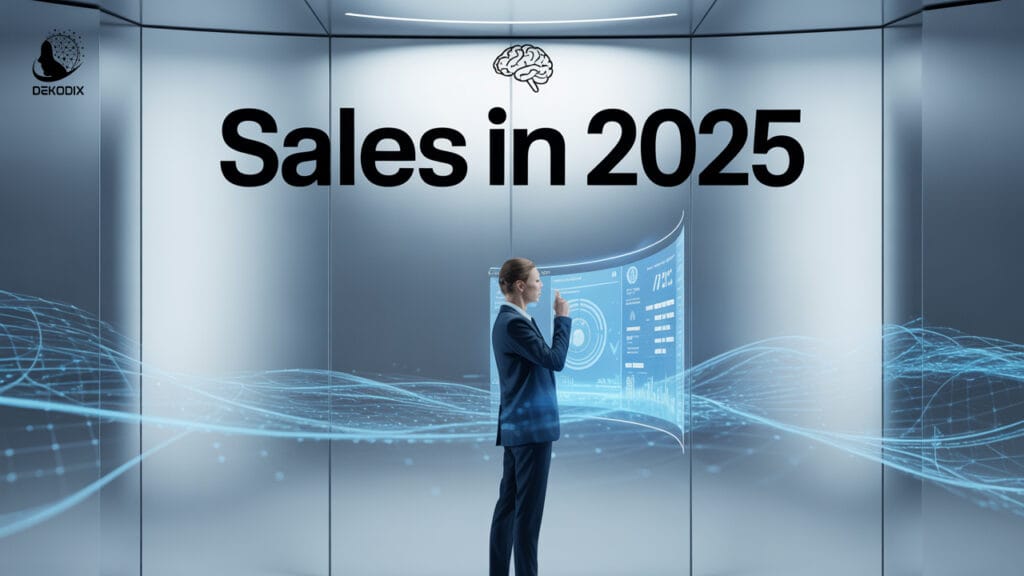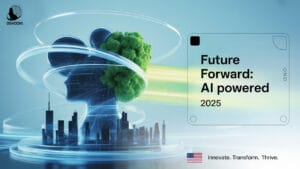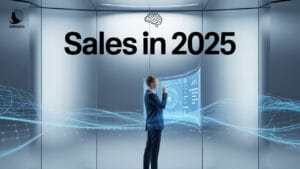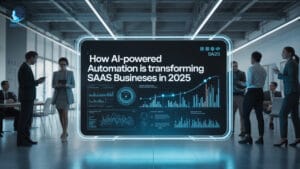Introduction – The New Era of Sales
The sales industry is undergoing a radical transformation, one that’s redefining how businesses approach customers and close deals. The traditional methods of pushing products through cold calls, scripted presentations, and generic email blasts are no longer effective. Buyers today are far more informed, skeptical of hard pitches, and responsive only to messages that resonate with their individual needs. With digital tools, AI, and data-driven insights, companies can now reach prospects in more personalized and authentic ways. In 2025, sales is less about persuasion and more about precision and personalization. This shift isn’t temporary, it’s a foundational change. For businesses in the USA and beyond, adapting to this modern approach isn’t optional. It’s the only way to stay competitive in a landscape that rewards relevance, trust, and real value.
How Sales Evolved in the Last Decade
Over the past ten years, the sales landscape has dramatically shifted from transactional tactics to relationship-based strategies. In the early 2010s, success often depended on volume, more calls, more meetings, more emails. But as consumers gained access to better information, the balance of power shifted. Buyers started completing over 70% of the decision-making process before ever speaking to a sales rep. This forced sales professionals to move from product-pushers to trusted advisors. CRM platforms, marketing automation tools, and sales intelligence software enabled reps to understand buyer behavior like never before. Instead of guessing, sellers now use real-time data to deliver timely, personalized messages. The focus is no longer just about closing the deal, it’s about solving problems. The last decade laid the groundwork for what’s now becoming the standard: smart, customer-centric selling.
Why 2025 Marks a Tipping Point
The year 2025 isn’t just another milestone, it’s a major tipping point for sales. The convergence of advanced AI, hyper-personalization, and buyer fatigue with traditional pitches is transforming the rules of engagement. As decision-makers grow increasingly immune to impersonal outreach, sales teams must adopt technologies that enable smarter, faster, and more meaningful interactions. In 2025, automation doesn’t mean robotic messaging, it means streamlined processes that free reps to focus on building real relationships. AI-driven insights predict buyer intent, behavior, and timing, allowing sellers to engage when it matters most. With privacy laws tightening and customer expectations evolving, the pushy pitch is not only ineffective, it’s damaging. Companies in the U.S. that embrace this shift toward empathetic, insight-driven selling are leading the charge, while those clinging to old tactics are rapidly falling behind.
How Data Fuels Personalization
In 2025, data is the lifeblood of personalized sales strategies. Sales teams are no longer relying on surface-level demographics or outdated email lists. Instead, they leverage advanced behavioral insights and real-time data to understand what prospects are actually looking for. Every click, form submission, content view, and social interaction tells a story. These micro-interactions give sales professionals a detailed view of where a prospect is in their buyer journey. With tools that track user behavior across channels, sales reps can now deliver messages that feel timely, relevant, and specific. This kind of tailored approach doesn’t just boost engagement it builds credibility and trust. In a competitive sales environment, understanding your buyer’s behavior is the first step in offering solutions that genuinely meet their needs.
Customer Data and Behavioral Insights
Customer data is no longer just about names, emails, and job titles. In 2025, it’s about understanding intent, timing, and preferences at a granular level. Sales teams in the U.S. use behavioral insights to track what content a lead interacts with, how long they spend on a product page, and what questions they ask during chat sessions. This data gives reps the power to prioritize leads with higher intent and customize outreach accordingly. For example, if a prospect watches a product demo or compares pricing, that’s a clear signal they’re nearing a buying decision. Instead of cold outreach, reps can respond with tailored recommendations or helpful resources. This insight-driven selling is quickly replacing the outdated “volume over value” approach, leading to shorter sales cycles and stronger client relationships.
Using CRM Platforms to Craft Custom Experiences
CRM platforms have evolved far beyond being simple contact databases. In 2025, modern CRMs like HubSpot, Salesforce, and Zoho are intelligent engines that drive real-time personalization. These platforms collect and analyze customer data, from email engagement to social activity, enabling sales reps to build tailored experiences for every lead. Smart segmentation allows teams to group prospects based on behavior, industry, interests, and buying stage. Automation tools within CRMs can then trigger custom workflows like sending a personalized case study after a demo or following up with a special offer based on a lead’s actions. The result? More meaningful conversations, higher conversion rates, and improved customer satisfaction. In a time when personalization is expected, CRMs are the cornerstone of delivering consistent, relevant engagement at scale.
Artificial Intelligence – The Quiet Sales Assistant
Artificial Intelligence has quietly become one of the most powerful tools in the modern sales toolkit. By 2025, it’s not replacing salespeople, it’s making them more effective. AI is working behind the scenes, sorting through massive amounts of data, identifying patterns, and helping reps know exactly when and how to engage a prospect. From automating repetitive tasks to generating insights on buyer behavior, AI enables sales professionals to focus on building real relationships rather than wasting time on guesswork. The shift isn’t just about efficiency, it’s about intelligence. Companies across the U.S. are using AI not as a gimmick but as a strategic advantage that powers personalization, boosts productivity, and drives real results. The best part? Buyers never feel like they’re talking to a machine.
AI in Prospecting and Lead Qualification
In 2025, AI is completely transforming how sales teams identify and prioritize leads. Instead of manually sifting through hundreds of contacts, reps now use AI-powered tools like Gong, ZoomInfo, and Apollo to automatically qualify leads based on behavior, industry trends, and buying signals. These tools track web visits, content engagement, and even sentiment in emails or calls, assigning scores to each lead so reps know who to reach out to first. This means no more wasting time on cold prospects with low interest. AI helps sales teams focus their energy where it counts with high-quality leads who are more likely to convert. In a competitive market, that kind of precision doesn’t just save time, it closes deals faster.
Predictive Analytics for Smarter Decision-Making
Predictive analytics is where AI truly shines in 2025. It goes beyond historical data to forecast future behavior helping sales teams act before opportunities are lost. Tools like Salesforce Einstein and Clari analyze buying patterns, engagement metrics, deal velocity, and more to tell reps when a lead is ready to convert or when a deal is at risk. This foresight allows teams to personalize their follow-up strategies, allocate resources more efficiently, and avoid missed revenue. In the U.S. market, where timing can make or break a sale, predictive analytics gives companies a serious competitive edge. Instead of reacting, sales teams are proactively guiding prospects through the funnel and that’s a game-changer in modern selling.
The Death of the Hard Pitch
The traditional hard pitch, pushy, scripted, and product-obsessed is losing its place in modern sales. In 2025, buyers aren’t just tired of aggressive sales tactics, they’re actively avoiding them. Whether it’s B2B or B2C, customers are more informed, skeptical, and protective of their time. A cold call that jumps straight into a sales spiel often results in an instant “no.” Instead of trying to force a sale, successful sales reps now focus on building conversations that add value. Soft skills like empathy, listening, and timing matter more than ever. Buyers expect relevance, not pressure. Companies across the U.S. are shifting away from persuasion and leaning into education and insight. Simply put, sales is no longer about convincing it’s about connecting.
Why Aggressive Tactics Are Fading Out
Aggressive sales tactics are fading because they don’t reflect how people make buying decisions today. Customers in 2025 are overwhelmed with choices and have access to endless information. The moment they feel pressured, they disengage. Pushy pitches break trust before it’s ever formed. On the other hand, consultative selling and value-first outreach meet the buyer where they are. Instead of telling prospects what they need, top sales professionals ask questions, listen, and offer solutions that genuinely align with business goals. Tools like AI-driven insights and CRM tracking support this approach by offering the data needed to personalize and time outreach properly. In today’s competitive landscape, leading with force is a losing game. Leading with understanding is what gets results.
How Storytelling and Value-Building Win Today
Storytelling and value-building are the foundations of successful sales in 2025. Instead of pushing products, smart sales reps share customer success stories that demonstrate outcomes. They show not just how their solution makes life easier or business more efficient. Storytelling helps humanize the brand and allows prospects to see themselves in the solution. It builds emotional connection, which is a powerful motivator for decision-making. Value-building goes hand in hand, as reps now focus on offering insight, resources, or free tools before asking for a commitment. This approach builds credibility and trust over time. The result? Prospects feel empowered, not pressured. In an era where buyers want relationships over transactions, storytelling and value-driven selling aren’t just effective they’re essential.
Social Selling and Digital Presence
In 2025, if you’re not visible online, you’re invisible in sales. Social selling is no longer optional; it’s a key part of the sales playbook. Buyers spend more time researching reps and companies on social platforms before taking a call or replying to an email. A strong digital presence builds trust before the first conversation even begins. It’s not just about sharing posts; it’s about being part of the conversation. Modern sales reps in the U.S. are using social channels like LinkedIn and Twitter to engage with prospects, share relevant industry content, and showcase thought leadership. This human-first approach builds familiarity and positions the rep as a helpful resource, not just a seller. In a noisy marketplace, social presence is what makes you stand out.
LinkedIn, Twitter, and Content Marketing in Sales
LinkedIn is the front line of B2B social selling in 2025. Top sales professionals use it to build credibility, grow their networks, and engage decision-makers with valuable content. From sharing industry trends to commenting on relevant discussions, LinkedIn offers direct access to high-intent buyers. Twitter (now X) continues to be a great place for quick takes, industry news, and casual engagement that nurtures relationships over time. Content marketing plays a vital role in both channels. Reps who regularly publish LinkedIn articles, video snippets, or carousel posts showcasing product use cases or client wins get noticed. Buyers engage more with reps who educate and inform rather than just sell. If you’re not creating content, you’re missing an opportunity to position yourself as a trusted expert in your space.
Personal Branding for Sales Reps
Personal branding is one of the biggest competitive advantages in sales today. In 2025, top-performing reps are investing in their personal brand just as much as companies invest in corporate branding. Why? Because buyers are more likely to engage with people than faceless logos. A sales rep who regularly posts insightful content, shares behind-the-scenes stories, and participates in industry discussions is seen as credible and approachable. Platforms like LinkedIn allow reps to showcase not only what they sell, but why they sell it and how they’ve helped others succeed. This builds trust and humanizes the sales process. Whether you’re in SaaS, finance, or retail, having a strong online presence can warm up cold leads and open doors that no email sequence ever could.
Sales Tech Stack of 2025
The modern sales team in 2025 is powered by a highly advanced and tightly integrated tech stack. From AI-driven CRMs to real-time engagement platforms, today’s tools are designed to streamline workflows, personalize outreach, and improve close rates. It’s no longer just about having a CRM, it’s about building a connected ecosystem that supports every stage of the buyer journey. The average U.S.-based sales team now relies on multiple specialized platforms, including tools for lead scoring, email automation, meeting scheduling, and proposal generation. Speed, accuracy, and personalization are the pillars of this stack. The right technology not only helps reps stay organized it gives them insights they can act on. Sales professionals who know how to leverage these tools gain a clear edge in an increasingly competitive market.
Top Tools Modern Sales Teams Use
In 2025, the best sales teams are using a carefully curated mix of software to drive results. Leading CRMs like Salesforce and HubSpot remain the backbone of most sales operations, offering robust data tracking, automation, and AI-powered recommendations. For outreach, tools like Salesloft and Outreach.io help teams manage multi-step cadences while maintaining a personal touch. Platforms like Gong and Clari provide conversation intelligence and pipeline forecasting, giving managers deeper visibility into deal progress. Meeting schedulers like Calendly and lead enrichment tools like ZoomInfo round out the stack. The goal isn’t to collect tools, it’s to integrate systems that help reps focus on selling smarter. U.S. sales teams that master their stack are moving faster and closing bigger deals than ever before.
Integration Between Marketing and Sales Platforms
One of the biggest shifts in 2025 is the seamless integration between marketing and sales platforms. Siloed systems are officially a thing of the past. Tools like HubSpot, Marketo, and Salesforce now allow sales and marketing teams to share data in real time, ensuring both departments are aligned on messaging, targeting, and timing. For example, when a lead downloads an eBook or attends a webinar, that activity is instantly visible to the sales rep, who can then follow up with tailored outreach. AI enhances this further by identifying when a lead is most likely to engage based on past behavior. Integrated platforms also support lead scoring, nurture campaigns, and attribution modeling giving both teams the insights needed to drive revenue. In 2025, integration isn’t just convenient, it’s essential for sales success.
Conclusion – The Relationship Economy in Sales
Sales in 2025 has shifted from a transactional model to a deeply relationship-driven strategy. Success no longer comes from who can pitch the loudest, but from who can connect the most authentically. The modern buyer values trust, relevance, and personalized attention over product features and discounts. That’s why today’s top-performing sales professionals are leveraging AI, data, and automation not to replace human interaction, but to support it. Sales tools now enable smarter, more timely outreach while freeing up time for reps to focus on what matters: building real relationships. In this new era, sales is not just about closing deals, it’s about creating long-term value. U.S. businesses that embrace this shift are not only seeing better conversion rates but also building loyal customer bases that fuel sustainable growth.
The rise of the relationship economy in sales is also reshaping how teams are structured, trained, and measured. Sales leaders are moving away from rigid quotas and one-size-fits-all scripts and instead focusing on coaching reps to think strategically, communicate empathetically, and personalize every touchpoint. In 2025, tools like AI-driven analytics and CRM insights are powerful, but they’re only as effective as the people using them. That’s why the future of sales lies at the intersection of technology and human connection. Companies that combine cutting-edge tools with genuine relationship-building are creating a competitive advantage that can’t be copied. As the hard pitch dies out, the sales professionals who lead with insight, transparency, and value will be the ones closing deals and keeping customers in the long run.




